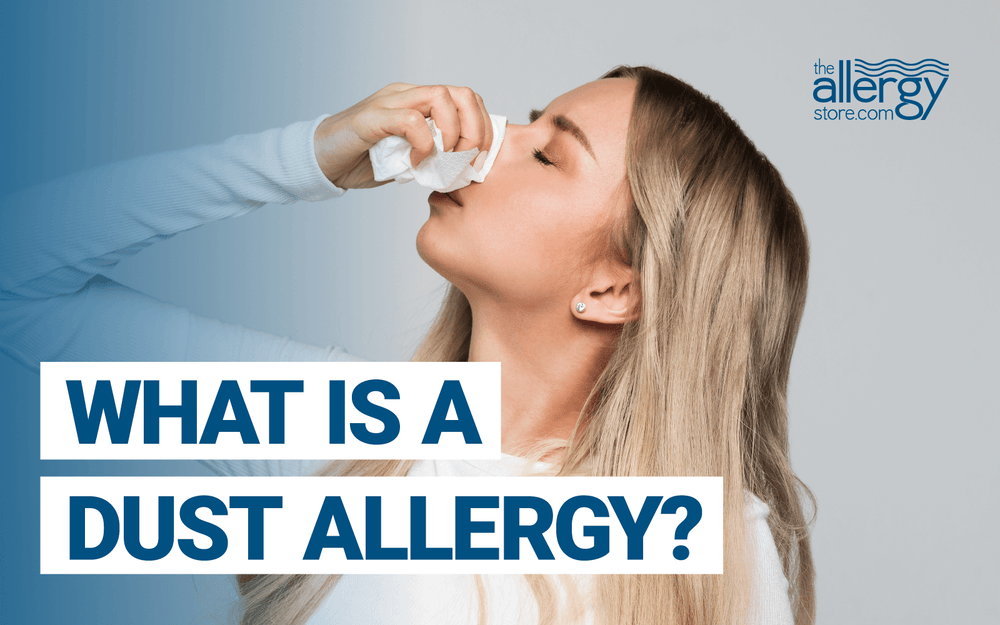
Achoo! Darn that dust allergy! Have you or someone you love ever uttered these words? We blame dust allergy for many things:
- Sneezing
- wheezing
- itchy, watery eyes
- coughing
- stuffy nose
- runny nose
But exactly what is dust allergy? Let’s take a look.
Dust Allergy Isn’t an Allergy to Dust
To understand dust allergy, you need to understand dust. “Dust” is a mixture of particles. The specific composition varies by location. David Layton and Paloma Beamer, professors of environmental policy at the University of Arizona did a study of dust in the United States to try to figure out what is in the stuff. It was gross.
As a rule, they found household dust is made up of:
- tiny bits of shed human skin
- bits of animal fur and skin
- decomposing insects
- food debris
- fibers from clothes, bedding and other fabrics
- tracked-in soil
- soot
- residual particles from smoking and cooking
Some samples even contained lead, arsenic and DDT. Makes you wonder where they were collecting samples, but it was just households in Midwest states and Sacramento California.
So, you don’t really have an allergy to dust, you have an allergy to one or more components of dust. Most commonly the decomposing insects in the form of dust mites.
Dust Mites and Dust Mite Allergy
Ever wonder about dust mites? They are microscopic creatures related to spiders. Dust mites feed on shed human skin (one of the components of dust). Dust mites don’t bite, in fact they can't, but their gut contains a protein that they use to digest our skin.
This protein (der f1) is the source of the “dust” allergy. Every time the dust mite poops, a bit of this protein is excreted along with the fecal pellet. Gross right?
The hard cuticle that covers the mite body also contains the protein. When the dust mite dies, it doesn’t create any additional allergen in the form of fecal matter but it does create an explosion of allergen as the body decomposes.
The allergy-causing protein from the gut and the cuticle are released as the mite rots. Even grosser. So many people with dust allergy actually have dust mite allergy.
Pet Allergy
Another major component of household dust are those little bits of animal skin and fur. Those generally come from household pets.
Certain furred animals have proteins in their saliva and urine that cause allergic reactions in humans. The proteins most commonly found attached to the skin and fur in house dust are from cats and dogs.
Horses are also a source of allergen, but few people keep a horse in their house. As the animal grooms its coat or empties its bladder, bits of the saliva or urine stick to skin and fur. When these are shed they become part of the dust soup.
Control the Allergens to Control the Allergy
So, controlling your dust allergy is all about knowing what in the dust triggers your reaction and then reducing your exposure to that trigger. You can visit an allergist for testing. Skin challenge or simple blood tests can pull back the veil on your triggers. In the case of dust mite or pet allergy, immunotherapy can h
You can reduce your exposure to the allergens in dust by knowing where the dust in your house comes from and reducing your exposure to dust. Frequent cleaning with damp rags and vacuuming with a HEPA filtered vacuum machine reduces dust.
You can also use allergy control products. The Top 5 Allergy Control Products will give you the most relief for the dollar and effort spent. You should check them out. Not sure where to start? Call us at 1-800-771-2246. We can help.
So, next time you curse that dust allergy, remember it isn’t the dust. It’s what’s in the dust that matters.
Til next time!
Cheryl
P.S. Allergy elimination is about eliminating the allergy-causing substance in your home the best you can. To learn more please click here to download your free copy of" You Can Do It! Allergy Free Living.

